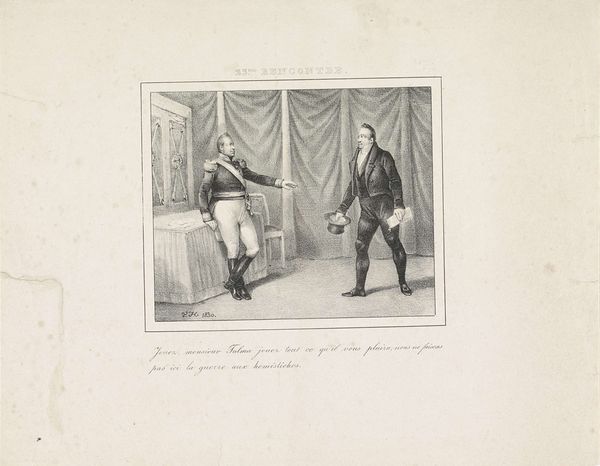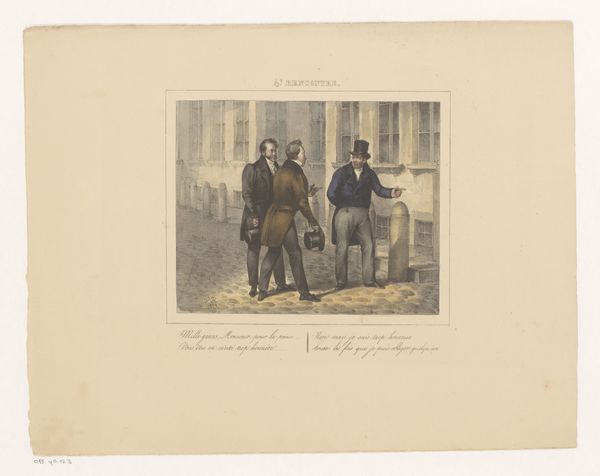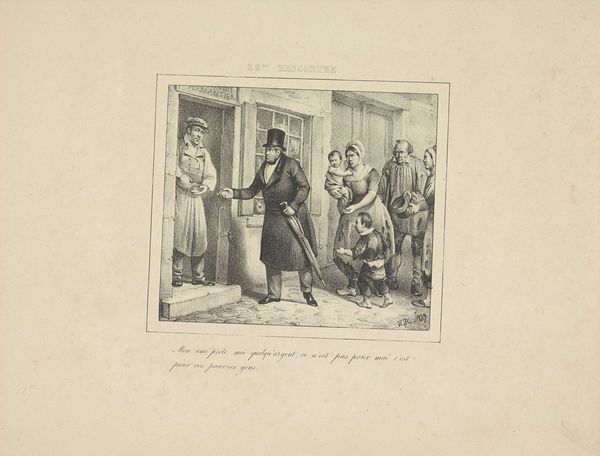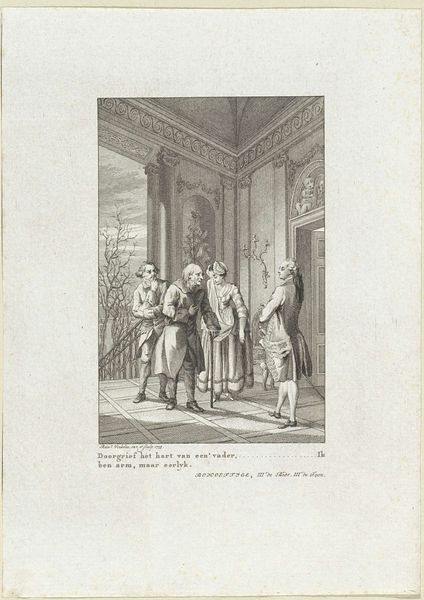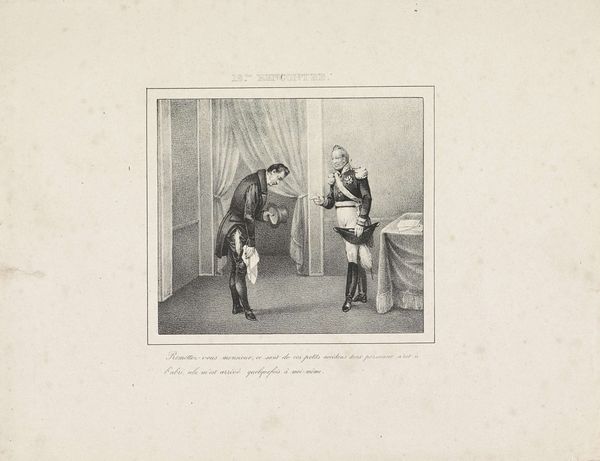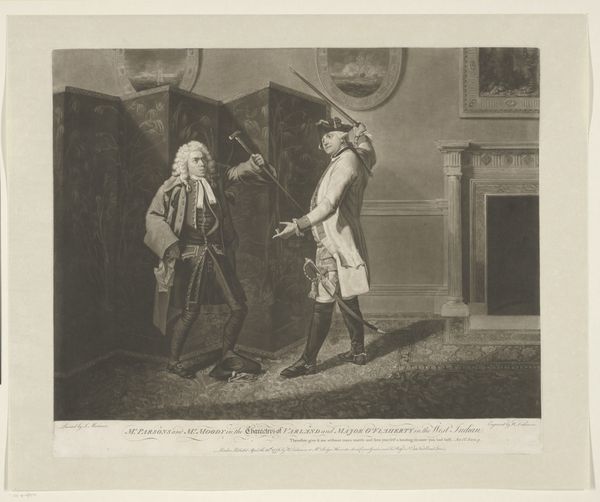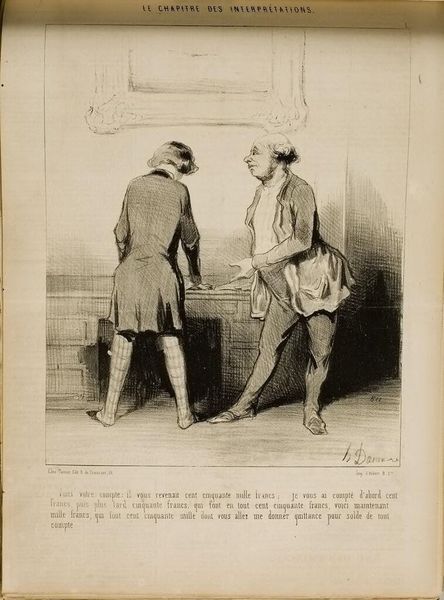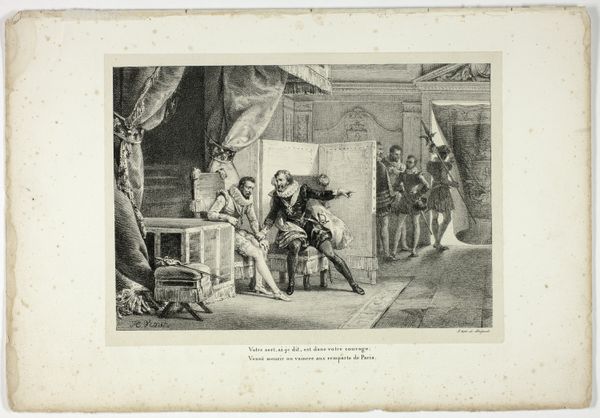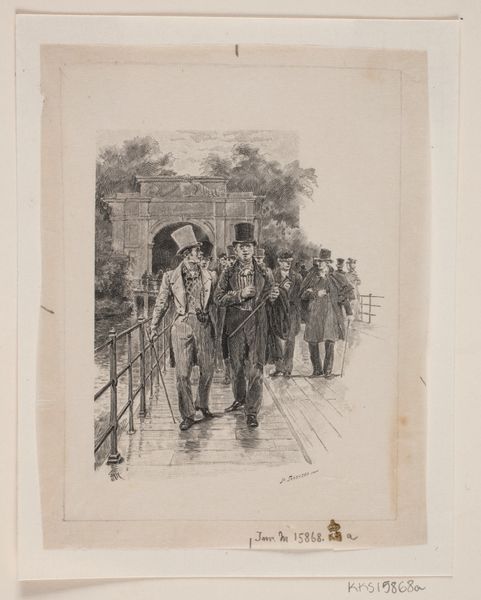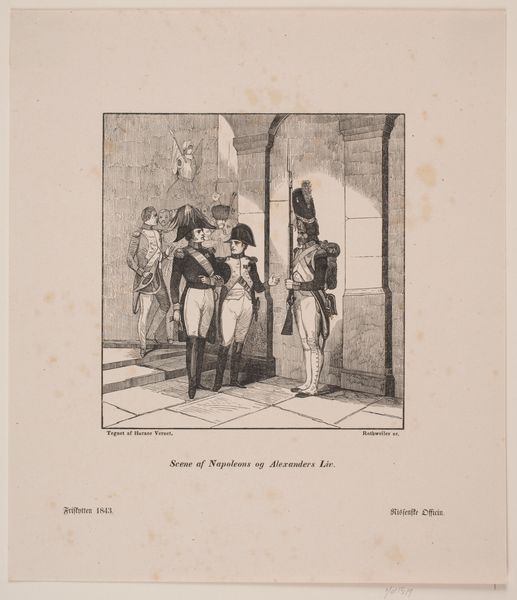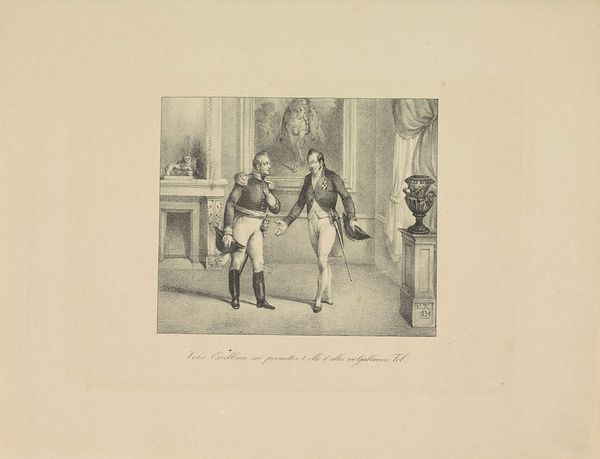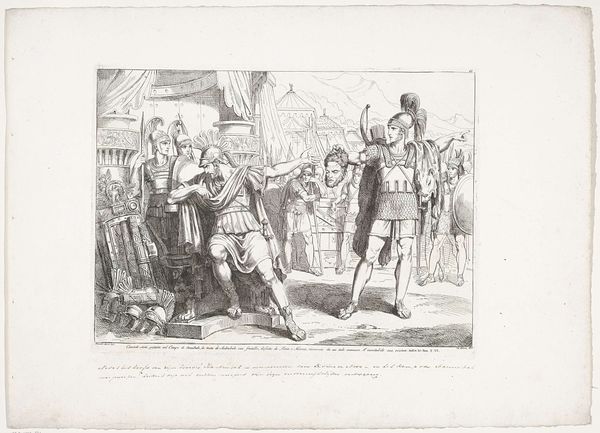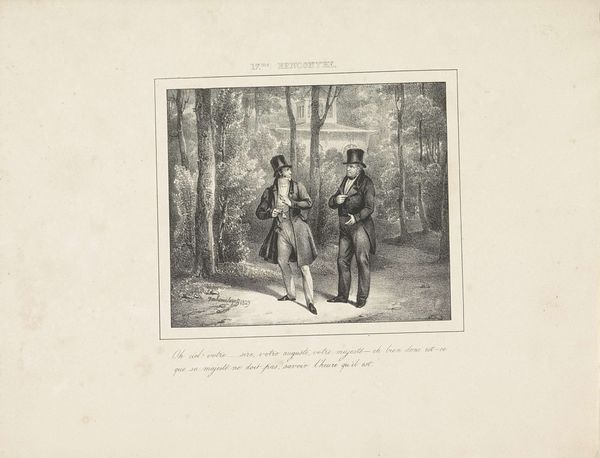
drawing, paper, pencil, pen
#
portrait
#
pencil drawn
#
drawing
#
narrative-art
#
pencil sketch
#
paper
#
romanticism
#
pencil
#
pen
#
cityscape
#
genre-painting
#
realism
Dimensions: height 235 mm, width 305 mm
Copyright: Rijks Museum: Open Domain
Curator: Looking at this detailed pencil and pen drawing titled "Koning Willem I vraagt een hoed te leen, 1829" by Jean-Louis Van Hemelryck, created in 1829, it strikes me how everyday and accessible it feels despite depicting royalty. Editor: Yes, I see what you mean. Initially, the grayscale palette and almost photorealistic detail give it an impression of quiet, candid observation—as if capturing a fleeting, unposed moment. Curator: The piece seems to blend realism and romanticism. On the one hand, there's a genuine effort to portray the urban setting and the figures with accuracy, but on the other hand, the narrative element injects an element of Romantic storytelling, drawing you into their interaction. Editor: Indeed, it prompts you to speculate about the story. The drawing’s emphasis on dress makes you consider not only wealth but status. I wonder about the symbolic weight of borrowing a hat at the time. Was it about solidarity, humility, or perhaps an intentional bridging of social gaps? Curator: It's tempting to view the borrowing of a hat as an emblem for the king's interaction with his populace. Post-revolution, perhaps a moment signifying his wish to be accessible and amongst his subjects. Clothing is used to denote class, so changing or borrowing items creates an image of solidarity. Editor: It’s interesting how this image was likely commissioned for specific public consumption to construct or reinforce narratives of power, maybe to show Willem as one with the working man. One has to also remember the fraught politics that underpinned Dutch Belgian relationships at this point, with implications for imagery in both countries. Curator: Right, it could serve a public function while simultaneously revealing more intimate aspects of the monarchy. In either sense, I enjoy how it blends artistic expression and socio-political statement through a relatively simple, yet impactful image. Editor: Absolutely. By focusing on such an everyday scene and its visual motifs, we can start unpacking grander themes within 19th-century society.
Comments
No comments
Be the first to comment and join the conversation on the ultimate creative platform.
